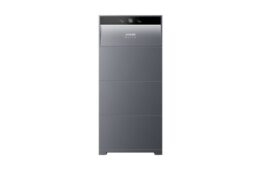By Michael Klaus, Partner, Hunton Andrews Kurth
Battery energy storage projects serve a variety of purposes for utilities and other consumers of electricity, including backup power, frequency regulation and balancing electricity supply with demand. These varying uses of storage, along with differences in regional energy markets and regulations, create a range of revenue streams for storage projects. In many locations, owners of batteries, including storage facilities that are co-located with solar or wind projects, derive revenue under multiple contracts and generate multiple layers of revenue or “value stack.” Developers then seek financing based on anticipated cash flows from all or a portion of the components of this value stack.
The following article provides a high-level overview of the revenue models for non-residential energy storage projects and how financing parties evaluate the various sources of revenue.
1. Fixed price contracts
Financing parties traditionally prefer projects that have long-term agreements from creditworthy parties to pay a fixed price for a project’s output, meaning that assuming that the project operates as expected, the project will generate revenue that does not fluctuate with changes in market prices for the output. Financing parties are able to size their loans or equity investments based on an assumption that the project will produce a minimum level of output and that a creditworthy party will pay a fixed price for such output (either on a per-unit or per-month basis or a combination of those prices), and that the project’s net cash flows will be sufficient to repay a loan and for equity investors to earn a return on their investment. Fixed price contracts take several forms.
Utility tolling and capacity contracts
In tolling contracts or capacity contracts, the buyer pays a capacity payment or “battery-use payment” for the right to dispatch energy from the storage system, subject to compliance with negotiated operating procedures. The fixed payment is often conditioned on the project continuing to meet specific operating metrics, such as demonstrating an ability to hold an output at the delivery point or maintain a guaranteed level of availability during each measurement period. Under these types of contracts, the project generally does not retain the right to additional revenue from the sale of electricity discharged from the battery. In exchange for a fixed payment, the buyer receives the benefits of operation of the battery. The amount of the payment is often determined based on energy delivered to a storage facility by a generating facility (and the utility pays a price per kilowatt-hour for such energy whether it actually uses energy that is stored in the storage facility), or the payment could be a fixed monthly amount that is subject to adjustment based on performance of the facility.
From the perspective of a utility, entering into such a contract may enable it to (a) draw upon stored electricity during times of peak electricity demand (such as in the late afternoon) rather than relying on electricity generated by gas-fired projects, (b) regulate frequency levels on the grid by charging or discharging the battery when there is an imbalance between supply and demand for electricity on the grid, or (c) inject reactive power into the grid, which maintains the force (voltage) needed to move electrons through the grid.
End-customer battery use contracts
Corporate end customers also enter into battery use contracts that allow the customer to (1) store electricity that is generated by a solar project during mid-day hours when market prices are low, and then use stored electricity later in the day when retail electricity prices are high and (2) access stored electricity when electricity from the grid is otherwise unavailable due to grid outages. Ownership of the project, including the right to obtain any applicable tax credits, is retained by the sponsor, and the end customer pays a fixed monthly fee for the right to use the battery.
Resource adequacy contracts
For utility-scale projects in California, storage contracts (whether for standalone storage projects or solar or wind projects paired with storage) typically include a fixed-price payment for resource adequacy attributes, which utilities and other load serving entities are required to procure under state regulations to ensure sufficient capacity to meet customer demand. Under many of these contracts, the project owner retains operational control of the storage facility and the right to collect and retain revenue from sales of electricity discharged from the battery. The project may be able to sell electricity to the same buyer of the resource adequacy attributes or to another buyer in the market.
2. Variable revenue sources
Other forms of variable payments related to storage facilities may provide potential increased revenues to project sponsors and financing parties, although upfront sizing of a project loan or equity investment does not typically account for sources of revenue that are subject to potentially volatile swings in market prices for project output. Financing parties and sponsors often negotiate how these cash flows will be allocated when received by the project. For example, these cash flows could be allocated to financing parties as a prepayment or could be distributed entirely to sponsors (or shared between financing parties and the sponsor depending on the overall financing structure). Depending on the project’s geographic location and size, several forms of variable revenue may be available to the project’s owners.
Wholesale electricity sales
Pairing a storage project with a solar or wind power generation project could allow projects to charge the storage system rather than deliver power to the grid when market prices for electricity are low (or negative) or when electricity that would otherwise be delivered to the interconnection point would be curtailed. In this way, if there is insufficient demand for electricity that is generated by a solar or wind project, the battery project is used to store the excess electricity. Then, the project could discharge electricity during times of high market prices and when electricity would not be curtailed at the interconnection point. Similarly, the price paid for electricity by buyers under power purchase agreement is often higher during late afternoon periods, and a storage facility may enable a project to deliver electricity to the buyer during such peak pricing periods. This feature of storage projects also enables project sponsors to manage risk associated with financial hedge contracts that contemplate delivery of fixed volumes of energy during specified periods. For generating facilities that are eligible for production tax credits, the project’s owners may be limited from claiming a production tax credit based on energy that is discharged from a co-located storage system unless the storage system cannot be charged with power from the grid.
Energy management fees
For behind-the-meter battery storage projects that are paired with solar projects, owners of the projects may be able to charge customers fees based on the customer’s savings in electricity costs or demand charges. For example, in California, electricity rates vary by time of day, and industrial customers often incur large demand fees. By shifting electricity usage to times when electricity rates are lower or by reducing the peak demand, customers can reduce electricity costs, and the project owner may receive a fee for providing this benefit to the customer.
Ancillary services
In many regions, storage projects may be able to sell “ancillary services” in addition to energy or capacity either to transmission owners or to regional grid operators. Ancillary services include various forms of frequency regulation and operating reserves products that may be sold in market-based clearing price auctions. They also include certain voltage control services that are sold at cost-based rates that may be established through a utility or grid operator’s tariff or through a project’s own rate schedule.
State-level credits and incentive payments
Various state-level programs provide credits or other incentive payments for distributed general solar and battery storage projects. In New York, for example, storage projects may be eligible for the value of distributed energy resources (VDER) credit, which is a per-kilowatt credit that includes fixed-rate and variable-rate components.
3. Hybrid revenue models
Co-located solar and storage projects usually feature a mix of the fixed and variable revenue sources described above, which continue to evolve as there are changes in regional energy regulations and markets. Fixed-price contracts allow a project to generate a relatively predictable and stable amount of revenue, subject to the project meeting technical operating assumptions. For many power projects, a single power purchase agreement provides the source of all revenue for the project. For battery projects and solar + storage projects, this is rarely the case, and project developers piece together a variety of contracts and market participation plans to generate revenue, setting up a negotiation with financing parties regarding the treatment of the revenue streams under financing documents and the project’s plans for maximizing the value of a storage project.
 Mike Klaus is a partner at Hunton Andrews Kurth LLP, where he represents tax equity investors, lenders and sponsors in the acquisition, development and financing of renewable energy projects. Mike has represented the tax equity investors in the financing of several of the largest solar projects in the United States, including projects with battery storage facilities.
Mike Klaus is a partner at Hunton Andrews Kurth LLP, where he represents tax equity investors, lenders and sponsors in the acquisition, development and financing of renewable energy projects. Mike has represented the tax equity investors in the financing of several of the largest solar projects in the United States, including projects with battery storage facilities.








I think a storage facility could guarantee capacity during a specific time period of the day (e.g. peak hours) if they can ensure the battery will be charged outside of that time period.
How does a capacity payment work of a battery storage facility? GTs can generate 24/7 so they will gain a capacity payment per MW per Hour. A battery can only generate until the battery depletes, so a 20 MWhr facility can generate ~5MW for 4 hrs. then it needs to be recharged thus it is unavailable. Alternately a 5MW GT that can generate 5MW X 24 hrs = 96MW. How is the capacity payment calculated for the battery storage facility? Is availability calculated into the pay structure?